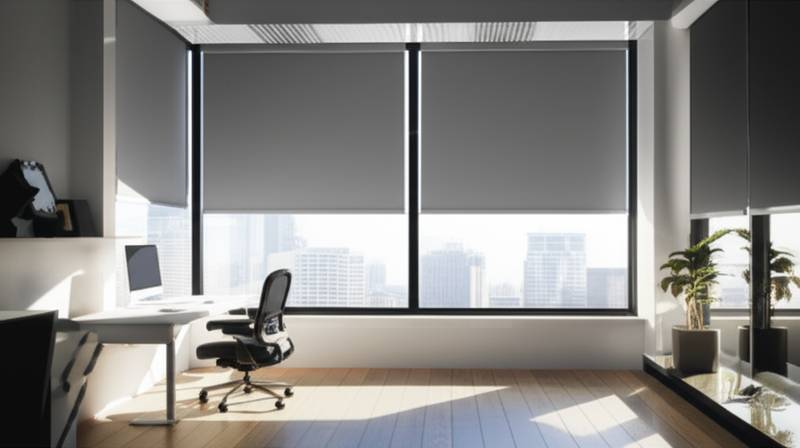Save 35 Percent on HVAC Costs with Sun-Tracking Smart Blinds
Smart homes continue to advance beyond basic voice assistants and connected lighting. The latest innovations target more efficient and intuitive climate control. Sun-tracking smart blinds represent a key advancement, as they adjust window coverings according to the sun's position to minimize energy waste. These systems balance natural light and indoor temperature automatically, enabling homeowners to reduce HVAC costs by up to 35 percent while enhancing comfort and convenience.
Achieve Smarter Shade Control for Substantial Savings
Traditional blinds require manual adjustments, which many people limit to opening them in the morning and closing them at night. Few consider how sunlight influences heating and cooling demands throughout the day. Sun-tracking smart blinds address this oversight through integrated sensors and algorithms that monitor sunlight intensity, angle, and direction. The blinds respond by positioning themselves to block excess heat during peak afternoon hours or to admit light during milder periods.
This automated process significantly lowers home energy use. Heating and cooling account for nearly half of typical residential energy consumption. By intelligently managing sunlight, the blinds decrease the workload on air conditioners and furnaces. For instance, as afternoon sunlight intensifies in a living room, the blinds tilt to redirect light away from the interior, maintaining cooler temperatures without additional energy expenditure.
Understand the Core Technology Behind Sun-Tracking Blinds
Contemporary sun-tracking blinds incorporate light sensors, motorized mechanisms, and intelligent controllers. These components integrate with a home's automation ecosystem, where the system learns from daily routines and makes proactive adjustments. Certain models leverage GPS coordinates to predict the sun's path, while others employ real-time sensors positioned at window edges to gauge brightness levels.
Pairing these blinds with smart thermostats amplifies their performance. If a thermostat registers an increase in indoor heat, it instructs the blinds to partially close and mitigate the rise. In cooler moments, the blinds open to harness passive solar warming. This interplay forms a responsive climate management cycle that sustains optimal conditions with minimal user intervention.
See Adaptive Comfort in Everyday Scenarios
Consider a residence featuring expansive south-facing windows. In the early morning, the blinds fully retract to invite gentle natural light into the rooms. As the sun rises, the system incrementally adjusts the slats to diffuse glare and curb heat buildup. Toward evening, with temperatures easing, the blinds reopen to absorb lingering solar warmth before dusk.
Leading manufacturers such as Hunter Douglas, Lutron, and Eve offer models that execute these functions seamlessly. These products link to established platforms including Apple Home, Google Home, and Amazon Alexa. Homeowners gain the ability to view status updates or make overrides via voice activation or smartphone applications.
The outcome delivers an environment that responds intuitively to changing conditions. Residents experience a space that anticipates adjustments, thereby conserving energy without demanding attention.
Unlock the Full Energy Efficiency Benefits
Research on automated shading systems indicates potential reductions in HVAC energy use of up to one-third. These gains arise from stabilizing indoor temperatures, which allows heating and cooling units to function more steadily. Rather than frequent on-off cycles that strain equipment, the systems maintain equilibrium, extending equipment life and cutting operational expenses.
Sun-tracking blinds complement additional efficiency tools effectively. Combining them with electrochromic smart glass, motion-based occupancy detectors, or multi-zone climate controls compounds the advantages. This integrated strategy yields quantifiable decreases in energy bills and contributes to reduced carbon emissions.
Experts emphasize that the most cost-effective energy strategy involves avoidance of unnecessary consumption. Sun-tracking blinds provide a passive barrier against thermal imbalances. The cumulative savings often recoup the upfront costs within a few years, positioning them as a prudent investment for both finances and ecology.
Experience Personalized Comfort Through Automation
Beyond financial benefits, these blinds elevate daily comfort and health. Exposure to natural light influences circadian rhythms, productivity, and rest quality. Automated adjustments ensure appropriate lighting levels, such as bright morning illumination to promote alertness or softened afternoon tones to ease visual fatigue.
Privacy receives similar attention from the system. Sensors trigger closures at twilight or upon detecting interior lighting activation, safeguarding the home discreetly. This proactive design fosters living spaces that align closely with individual preferences and routines.
Select and Install the Ideal Sun-Tracking System
To choose sun-tracking blinds that suit specific needs, evaluate options based on personal priorities. Systems with built-in energy tracking deliver insights into averted HVAC usage through detailed reports. Design-oriented models provide customizable fabrics and configurations that harmonize with existing aesthetics.
Essential considerations include the following:
- Compatibility with existing smart home ecosystems
- Power sources such as rechargeable batteries or integrated solar panels to simplify setup
- Options for programmable schedules to allow personalized overrides
- Precision sensors for accurate detection of temperature and light variations
- Low-noise motors that preserve ambient tranquility
Most installations prove accessible, particularly for units intended for self-assembly. After connection, the system analyzes usage patterns over several days to refine its operations autonomously.
Integrate Sun-Tracking Blinds for Lasting Efficiency Gains
Sun-tracking smart blinds demonstrate the potential of thoughtful automation to promote sustainability without complexity. They merge precise control, resource conservation, and user-centric design into a cohesive package. As these technologies gain traction, they promise to integrate routinely into forward-thinking residences, akin to the widespread acceptance of programmable thermostats.
Homeowners pursuing balanced comfort and economy find a reliable ally in this innovation. Envision interiors that remain temperate through seasonal shifts, all while trimming utility expenses. Sun-tracking blinds advance the vision of residences that proactively support occupant well-being and environmental stewardship.
